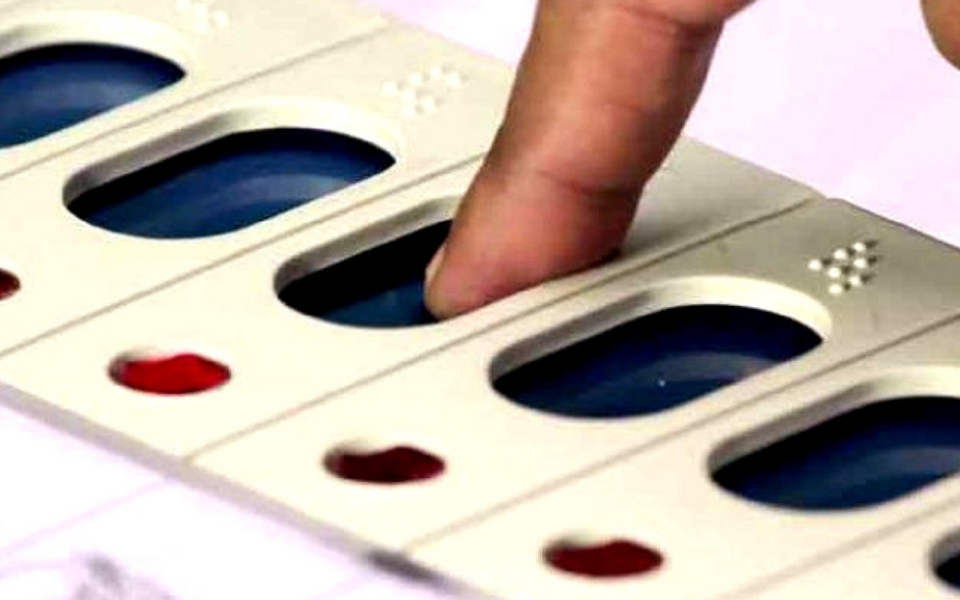While Chief Minister Shivraj Singh Chouhan is seeking his fourth consecutive term, the Congress, under the leadership of veteran Kamal Nath, would be hoping to
regain its place in the Hindi heartland.
In the MP’s battle, there is a neck-and-neck fight between BJP and Congress as per the poll trends. Trends released for all 230 seats show the two parties intermittently
edging past each other. Chief Minister Shivraj Singh Chouhan, contesting from Budhni, is leading with 33,281 votes. Congress’ Arun Subhashchandra is trailing
Chouhan with 13,988 votes.
1. The Madhya Pradesh Legislative Assembly comprises of 231 members — 230 of which are elected through elections while one member is selected through nomination. Currently, the BJP occupies majority in the Assembly with 165 MLAs, while Congress has 58 MLAs.
2. The BJP has again decided to go with Shivraj Singh Chouhan as their chief ministerial candidate as he has been holding their fort here since the last 15 years and is now seeking his fourth consecutive term. He contested from Budhni, the seat he has been winning since 2003. In the Congress, the contest is between veteran Kamal Nath and Jyotiraditya Scindia for the post of chief minister if the party comes to power.
3, Similar to Chhattisgarh, the BJP is facing anti-incumbency in Madhya Pradesh where it has been in power for 15 years. The state sends 29 MPs to the Lok Sabha and hence holds relevance for both the BJP and the Congress before next year’s general elections.
4. The BJP’s poll manifesto focused on farmers, jobs creation and restructuring the reservation grants in the state. The BJP promised to get the caste equation right by promising to ensure impartial probe in cases under the Scheduled Castes and Scheduled Tribes (Prevention of Atrocities) Act and offering free education to the economically backward students of general categories and other backward classes under the Sambhal scheme.
5. The BJP laid special emphasis on farmers who have been protesting against the central government of late. The BJP’s vision document proposes a scheme named Laghu Kisan Swawlamban Yojana that promises bonus for small and marginal farmers who don’t produce enough to sell at mandis and are deprived of benefits under schemes like the price deficiency scheme received by other farmers.
6. The BJP manifesto also promises to set up an agency to monitor global agricultural production to identify possible foreign markets for the farmers. It also promises to get a geographical indication (GI) tag for the state’s premium sharbati wheat and develop a Kisan Samruddhi Corridor on the state’s eastern to western corridor.
7. The Congress manifesto, on the other hand, chose to absorb more ‘soft Hindutva’ elements to woo the majority Hindu vote and shed its ‘pro-Muslim’ party image. Barring Punjab, the grand old party has been nearly wiped out from the north India politics due to BJP’s aggressive Hindutva politics and would be hoping to gain some ground before the Lok Sabha elections next year.
8. The previous manifestos talked about modernisation of madrasas, Sachar Committee recommendations and Urdu and Arabic languages, while repeatedly referring to minorities. However, the 2018 ‘Vachan Patra’ makes several references to the cow, promising gaushalas and ‘cow sanctuaries’, commercial production of gaumutra and dung, promises to develop Ram Van Gaman Path, laws for conserving sacred rivers mentioned in the scriptures, and promoting Sanskrit, among causes usually espoused by the BJP.
9. Not just the manifesto, but the approach adopted by the Congress in its poll campaigning in the state reflects the party’s realisation of the value of Hindu vote which has become a monopoly of BJP’s RSS-backed agenda since 2014. The party aggressively promoted the idea of ‘soft Hindutva’ endorsed by Congress president Rahul Gandhi who did not shy away from displaying his janewara (sacred thread worn by Hindus across their torso) and being called a ‘Shiv Bhakt’ in election rallies.
10. The state will also see a battle between the ‘naamdaars’, or political dynasts, as both BJP and Congress fielding them in sizeable numbers. Currently, the BJP has 20 dynast MLAs in its fold while the Congress has 17.


